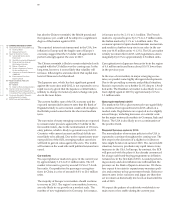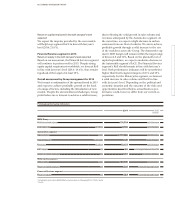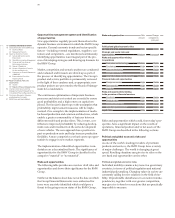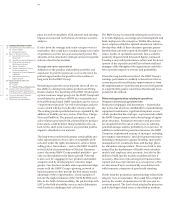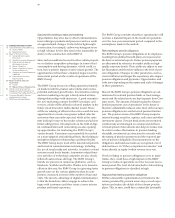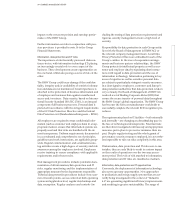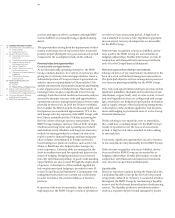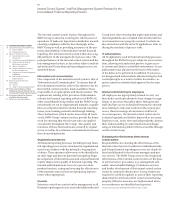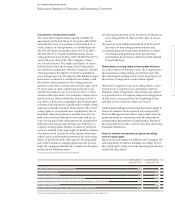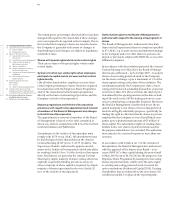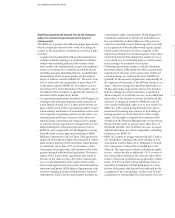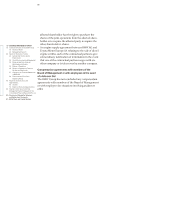BMW 2014 Annual Report Download - page 76
Download and view the complete annual report
Please find page 76 of the 2014 BMW annual report below. You can navigate through the pages in the report by either clicking on the pages listed below, or by using the keyword search tool below to find specific information within the annual report.
76
18 COMBINED MANAGEMENT REPORT
18
General Information on the
BMW
Group
18 Business Model
20 Management System
23 Report on Economic Position
23 General and Sector-specific
Environment
26 Overall Assessment by Management
26
Financial and Non-financial
Performance Indicators
29 Review of Operations
49 Results of Operations, Financial
Position and Net Assets
61 Comments on Financial Statements
of BMW AG
64 Events after the End of the
Reporting Period
65 Report on Outlook, Risks and
Opportunities
65 Outlook
70 Report on Risks and Opportunities
82 Internal Control System and Risk
Management System Relevant for
the
Consolidated Financial Reporting Process
83 Disclosures Relevant for Takeovers
and Explanatory Comments
87
BMW Stock and Capital Markets
Opportunities relating to sales and marketing
Opportunities may arise due to other technical innova-
tions relating to products and processes and as a result
of organisational changes. In the field of lightweight
construction, for example, carbon was being put to use
in
high volumes for the first time in the automobile in-
dustry
in the construction of the BMW i3.
Since carbon could also be used in other vehicle projects,
we see further competitive advantages in terms of fuel
consumption and driving dynamics, which could, in
turn, have a positive impact on sales volume growth.
The
opportunities will not have a material impact over the
assessment period on the results of operations of the
BMW Group.
The BMW Group focuses its selling capacities primarily
on markets with the greatest sales volume and revenue
potential and fastest growth rates. Investment in existing
and new marketing concepts is firmly aimed at inten-
sifying relationships with customers. A good example is
the new marketing concept for BMW i products and
services, which will be offered in selected markets in the
future via an innovative multi-channel model. There
will be no relaxing of efforts in the active search for new
opportunities to create even greater added value for
customers than currently expected, whilst at the same
time looking for ways to boost sales volumes and achieve
better selling prices. Developments in the field of digi-
tal
communication and networking are also opening
up opportunities for marketing the BMW Group’s
various brands. Consumers can meanwhile be reached
on a more targeted and individual basis, thus helping to
strengthen long-term relationships and brand loyalty.
The BMW Group keeps track of the latest developments
and trends in communication technology, including
the
use of social media and networks, in order to extend
customer reach for its brands. Automotive-related busi-
ness activities of technology companies are also closely
followed (autonomous driving). The BMW Group’s
brands are present on numerous platforms, such as
Face book, YouTube and Twitter. Thanks to its intensive
efforts in this area, the BMW Group is registering faster
growth rates on the various platforms than its com-
petitors,
measured in terms of the number of fans and
visits. The decisive advantage of digital communication
is that the brands are able to engage in a direct dia-
logue
with customers and thus create a more intense
product and brand experience.
The BMW Group considers that these opportunities will
not have a material impact on the results of operations
over the two-year assessment period compared to the
assumptions
made in the outlook.
Risks relating to pension obligations
The BMW Group’s pension obligations to its employees
resulting from defined benefit plans are measured on
the basis of actuarial reports. Future pension payments
are discounted by reference to market yields on high-
quality corporate bonds. These yields are subject to mar-
ket fluctuation and therefore influence the level of pen-
sion obligations. Changes in other parameters, such as
rises in inflation and longer life expectancy, also impact
pension obligations and payments. Opportunities and
risks arise depending on the nature and scale of changes
in these parameters.
Most of the BMW Group’s pension obligations are ad-
ministered in external pension funds or trust
arrange-
ments and the related assets are kept separate from Com-
pany
assets. The amount of funds required to finance
pension payments out of operations in the future is
therefore substantially reduced, since most of the Group’s
pension obligations are settled out of pension fund as-
sets. The pension assets of the BMW Group comprise
interest-bearing securities, equities, real estate and other
investment classes. Pension fund assets are monitored
continuously and managed on a risk-and-yield basis.
A broad spread of investments also helps to reduce risk.
In order to reduce fluctuations in pension funding
shortfalls, investments are structured to coincide with
the timing of pension payments and the expected pat-
tern of pension obligations. Remeasurements on the
obligations and fund asset sides are recognised, net of
deferred taxes, in “Other comprehensive income” and
hence directly in equity (within revenue reserves).
If risks relating to pension obligations were to mate-
rialise, they could have a high impact on the BMW
Group’s results of operations over the two-year assess-
ment period. The level of risk attached to risks relating
to pension obligations is classified as high.
Opportunities relating to pension obligations
Within a favourable capital market environment, the
return generated by pension assets may exceed expec-
tations and reduce the deficit of the relevant pension
plans. This, in turn, could have a materially favourable


